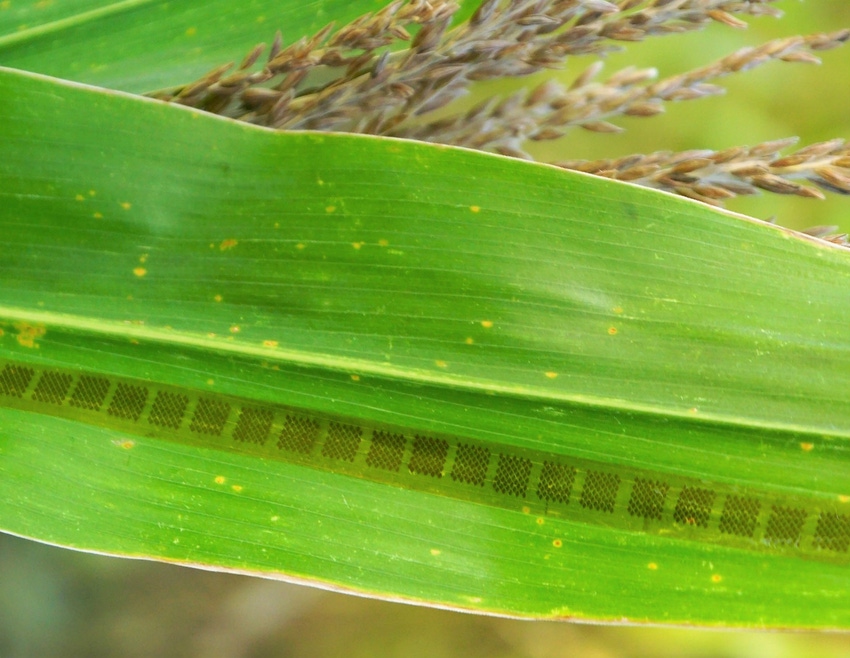
Imagine a corn plant wearing a tiny sensor that monitors the movement of water from soil to roots to leaves. Then imagine yet another sensor that offers real-time measurement of nitrates, allowing farmers to apply just the amount of nitrogen fertilizer the plant needs.
This technology is becoming a reality at Iowa State University under the direction of Dr. Liang Dong, a professor of electrical and computer engineering at the Ames campus. Dong is an internationally known expert in the development of sensors, biochips and micro-electro-mechanical systems and their applications for sustainable agriculture, plant science and health care.
He is also Editor-in-Chief of the scientific journal Sensors and Actuators A: Physical.
Dong spoke at the Stewards of the Future conference at North Carolina State University in Raleigh Dec. 3 on how scientists can now use electronic sensors to actually communicate with plants. At Iowa State, Dong and his colleagues are building incredibly small sensors that allow them to accurately monitor the health of plants.
“We’re trying to make sensors that are cheaper and still high performing,” Dong says.
“The concept of wearable electronic sensors for plants is brand new,” he adds. “The most exciting application of the tape-based sensors we’ve tested so far is the plant sensors. The plant sensors are so tiny they can detect transpiration from plants, but they won’t affect plant growth or crop production.”
The sensors can be used in the field to collect data in real time. “My group is developing soil sensors to monitor nitrogen in the field, transpiration sensors to measure water loss, and wearable sensors to detect volatiles emitted by plants,” Dong adds.
Dong points out that nitrogen is a high input cost for farmers. If they apply more nitrogen than the plant needs, they are wasting money. If they apply less nitrogen than the plant needs, they lose yield. It is difficult to determine the optimum nitrogen input a plant needs.
With sensors, farmers can measure nitrogen uptake in a real time manner.
In their research, Dong and his colleagues are using sensors and managing the response of corn to different fertilizer rates. The sensors show real time measurements of nitrate taken by corn.
“The nitrogen sensors will contribute to the rapid screening of varieties with high nitrogen use efficiencies,” Dong said.
Dong and his team have developed plant wearable sensors that can dynamically track water leaving the plant and how fast water actually moves from roots to leaves. The sensors allow them to actually measure water loss from the plants.
“Information on transpiration and water dynamics could be used as phenotypes to screen varieties for drought tolerance. This will enable breeders to identify hybrids with high water use efficiency,” he says.
About the Author(s)
You May Also Like






